Greenhab Report – February 11th
Crew 205 Green Hab Report – 11-FEB-2019
GreenHab Officer: Nathan Hadland
Environmental control: Heating and Cooling w/ ambient air (5 hrs)
Shade Cloth (40%)
Average temperatures:
Low: 17.1°C
High: 26.4°C
Hours of supplemental light: 5 Hours
Daily water usage for crops: 11.5 gallons
Water in Blue Tank: ~ 288.5 gallons
Time(s) of watering for crops:
TIME NOTED TEMPERATURE(° C ) / HUMIDITY(%)
[AT TIME OF WATERING]
1) 09.00 AM 19.9° C / 33 %
2) 12.00 PM 25.2° C / 62 %
3) 15:30 PM 20.5° C / 22 %
4) 18:15 PM 19.1° C / 48 %
Changes to crops: None
Narrative: I scrapped 2 of the cucumber experiments and set the plant material aside for later analysis. We prepared some wet mount slides and analyzed the samples under the microscope in the science dome and found nothing unusual with regards cell structure. However, the discoloration and dry material leads us to believe that they died of nitrogen deficiency and improper watering. We will continue analysis at a later date. I am attempting to salvage three of the cucumbers that appear to still be living. In addition, I prepped the tomato pots so they are ready for the seed arrival.
In the large planter, we dug up all of the carrots that were growing wrong areas and replanted them in one section (as I mentioned in my last report, they were clearly taking over the planter and causing nitrogen deficiency on the other crops). In the rearranging process, we freed up a lot of room for the tomatoes in the planter and we intend on using some of the seeds we received to add to the number of tomato plants in the planter.
I also harvested many of the larger carrot crops and we separated the carrots from the carrot greens. We dried out the greens using the ovens for our In Situ Resource Utilization (ISRU) study on cellulosic ethanol production (see the GreenHab section in the mission summary report). The harvest is being used for roasted carrots for dinner!
I started autoclaving pipet tips and microcentrifuge tubes, however, we had issues with the autoclave (refer to tonight’s operations report). Once the autoclave cools, later tonight we will start the procedure for germinating the Arabidopsis thaliana seeds and plating on the germination plates. We will put those plates in the GreenHab and expect germination within the next few days. Today, we started sampling regolith on EVA for later physical property characterization. Once the A. thaliana germinates, we will transfer the seedlings to the regolith we identify as the best substrates.
Harvest: Carrots: 314 g total weight
124 wet weight of carrot greens
190 g of carrots
23 g dry weight of inedible cellulosic material
Support/supplies needed: None.
Journalist Report – February 9th
Crew 205 Crew Journalist Report 10-FEB-2019 Sol 0
Author: Maria Grulich
Title: Landing on Mars and Handover of Command
3…2…1 Mars is calling, and we must go! The Eagle has landed! After spending several months preparing for this mission, 8 crew members from the USA, Spain, Germany, UK and Kuwait arrived at the lab.
The first day was focusing on exchanging information and get hands on learning how to run the MDRS. Everyone was talking about how to cook on Mars, maintaining the water, and living in the isolation of Mars. The night provided us with a gorgeous view of the stars. Thousands of stars above us like we have never seen before, it is breath taking!
Today the crew woke up after a night inside the Hab, which hosted 12 Martians. Blueberry pancakes with maple syrup and coffee put energy inside every crew member.
Early in the morning the two crews gathered outside to take pictures and watch the handover of command. Avishek, the commander from crew 204, shook Natalia´s hand with a smile to pass her the responsibility of commanding the International Emerging Space Leaders Crew 205. Two exciting weeks with a lot of experiments, EVAs and studies to understand leadership in such a diverse crew are ahead of us.
But SAFETY first! So we held a briefing with Attila at 1100. At 1500 the first group of four gathered to get familiar with the rovers and the second crew followed in the afternoon.
Tonight, Crew 205 will hold its first team meeting to go over our research goals, tomorrow´s EVAs, and the standard ISS voice protocol.
Tomorrow we will enter the sim and we can’t wait!
Ad Astra!
Greenhab Report – February 11th
Crew 205 Green Hab Report – 11-FEB-2019
GreenHab Officer: Nathan Hadland
Environmental control: Heating and Cooling w/ ambient air (5 hrs)
Shade Cloth (40%)
Average temperatures:
Low: 17.1°C
High: 26.4°C
Hours of supplemental light: 5 Hours
Daily water usage for crops: 11.5 gallons
Water in Blue Tank: ~ 388.5 gallons
Time(s) of watering for crops:
TIME NOTED TEMPERATURE(° C ) / HUMIDITY(%)
[AT TIME OF WATERING]
1) 09.00 AM 19.9° C / 33 %
2) 12.00 PM 25.2° C / 62 %
3) 15:30 PM 20.5° C / 22 %
4) 18:15 PM 19.1° C / 48 %
Changes to crops: None
Narrative: I scrapped 2 of the cucumber experiments and set the plant material aside for later analysis. We prepared some wet mount slides and analyzed the samples under the microscope in the science dome and found nothing unusual with regards cell structure. However, the discoloration and dry material leads us to believe that they died of nitrogen deficiency and improper watering. We will continue analysis at a later date. I am attempting to salvage three of the cucumbers that appear to still be living. In addition, I prepped the tomato pots so they are ready for the seed arrival.
In the large planter, we dug up all of the carrots that were growing wrong areas and replanted them in one section (as I mentioned in my last report, they were clearly taking over the planter and causing nitrogen deficiency on the other crops). In the rearranging process, we freed up a lot of room for the tomatoes in the planter and we intend on using some of the seeds we received to add to the number of tomato plants in the planter.
I also harvested many of the larger carrot crops and we separated the carrots from the carrot greens. We dried out the greens using the ovens for our In Situ Resource Utilization (ISRU) study on cellulosic ethanol production (see the GreenHab section in the mission summary report). The harvest is being used for roasted carrots for dinner!
I started autoclaving pipet tips and microcentrifuge tubes, however, we had issues with the autoclave (refer to tonight’s operations report). Once the autoclave cools, later tonight we will start the procedure for germinating the Arabidopsis thaliana seeds and plating on the germination plates. We will put those plates in the GreenHab and expect germination within the next few days. Today, we started sampling regolith on EVA for later physical property characterization. Once the A. thaliana germinates, we will transfer the seedlings to the regolith we identify as the best substrates.
Harvest: Carrots: 314 g total weight
124 wet weight of carrot greens
190 g of carrots
23 g dry weight of inedible cellulosic material
Support/supplies needed: None.
Crew 204 Mission Summary – February 9th
Nix Olympica – Crew 204
presents…
“Journey to Mars”
Authors :
Avishek Ghosh (Commander)
Pranit Patil (XO & Greenhab Officer)
Kunal Naik (Crew Engineer)
Sonal Baberwal (HSO & Crew Journalist)
Mars Desert Research Station (MDRS)
08.02.2019
Acknowledgement:
We express our sincere gratitude to the delegates of MDRS foundation, Dr Robert Zubrin, Dr. Shannon Rupert & Carie Fay for providing us this opportunity to participate in this simulation mission. We convey our sincere thanks to the associates of MDRS looking after various areas. We sincerely thank the mission support and CapCom for their continuous support and cooperation to make our simulation better by educating us to maintain the right protocol. We want to thank Mr. Atila and Mr. David for their friendly and comforting nature with all support. Finally, we would like to thank our friends and supporters without whom this mission would have not been possible.
“The plants, the lab,
The rovers, the Hab.
The love, the care,
The friendship we share.
The food to cook,
The windows we look.
The signing in and signing off,
The mission support and Cap Com.
The EVAs we risked,
Yes, everything will be missed!”
~ Sonal Baberwal.
Introduction:
Reaching Mars was one of humanity’s most ambitious undertaking. The direct result of the decades-long global space race and the sheer audacity of humans to take exploration to the fastest reaches of our solar system. But make no mistake, this is no easy journey! The trip to Mars is as dangerous and challenging as anything we have ever tried. The journey alone seems extremely difficult, given the hostile environment of space. Nevertheless, if we manage to reach Mars (and not die on impact), it is empirical that if extremely difficult to survive the cold red planet! MDRS has bestowed a great opportunity for us, an all Indian crew this time, to drain our fears and it has given us insight beyond the horizon. It has given us a short glimpse, of how it would really be to live on Mars. The team – Crew 204 is a group of a super enthusiastic aspiring astronaut, who is determined to contribute their part towards the isolation program at MDRS. It becomes difficult at times to be all alone in isolation, but the Crew-204 is determined to conduct their research, no matter what the situation be. Our participation in MDRS will allow us to establish a research framework to continue our collaborative research activities for a long-term space exploration in near future. This inquisitiveness to encounter a thrilling environment would be possible to find at Mars Desert Research Station (MDRS).
The Crew 204 is a group of astronaut aspirants committed towards contributing for ongoing researches that are conducted under isolation during MDRS missions. Crew 204 is an organized team which outlines the framework to understand the necessity of performing scientific and technical experiments in isolation. We have realized how important it is to expand the boundary of exploration with an intercultural and interdisciplinary aspect. Our participation in MDRS will allow us to establish a research framework to continue our collaborative research activities for a long-term space exploration in near future.
Mission Objectives:
When it comes to colonizing Mars, it should be taken into account that the environment on the red planet is extremely hostile. Crew-204 is simulating a real-life environment on how life would be on Mars. We are made to experience a real-life adventure through analog. Considering the facts of possible challenges to survive in the extreme environment on MARS, the Crew 204 is paving their way to pursue a real-life analog simulation under isolated environment. We are instigated to experience a real-life adventure through analog simulation while resembling an extreme environment and living in isolation with crewmates in surroundings similar to the planet MARS.
This mission is designed to gain knowledge and practical experience working with crewmates with diverse background with intercultural and international aspects. This mission would also allow us gaining insight scenarios of an astronaut program and selection process for the long-duration space mission. With the recent technological advancements and scientific knowledge base, it is very important to perform some sophisticated assessment to find another frontier to explore and develop the strategic methodology, which could be beneficial to develop effective team compositions and technologies for the long-duration space mission. All this is just a small step towards the new adventure, that will take us, even deeper into the stars above!
EVA Summary:
In any mission, the ‘Extra-Vehicular Activity’ is considered as a fundamental element. However, the first Sol started with an invitation from a great explorer and admirer of nature Mr. Jad Davenport. It was another wonderful opportunity to exhibit the MDRS crew preparation for the simulation. Crew 204 feels honored to participate in a session invited by such personnel. Followed by this, the Crew 204 had performed total 10 EVA’s for general exploration, collecting soil samples while capturing some beautiful moments, landscapes and mesmerizing beauty of the nature.
Our Research:
Our Research at MDRS aimed:
- Green Hab
- Science behind 3D printing
- Experimental GreenHab
- Design and development of Martian Rover for Lava tube exploration
Research Summary:
- GreenHab (Pranit Patil):
No Astronaut launches for space with their fingers crossed. That’s NOT how we deal with risks. We calculate and recalculate and re-recalculate our equations and then bid Godspeed. GreenHab was one such moment of introspection for me. It gave us an insight into how something as simple as gardening, can be so much revealing. Below is a summary of how it all has been so far.
On January 30th, we started with 267.5 gallons of water in the tank, the sprouts beans were planted and were kept in damp soil and the next day, it already started sprouting. These sprouts were later harvested on February 1st. Meanwhile, another mixture of seeds of Mat bean, Kidney bean, Fenugreek, and Sesame was kept ready for planting. These two were kept in damp soil and the moisture in it was always maintained. A mist of water was sprayed on them every once a while to ensure that the soil doesn’t dry out.
In a couple of days, the seeds busted out to give way to the newborn roots. All the sprouts in every soil tray had good growth. A couple of days more and we got used to the petrichor of soil; it somehow had a relaxing effect on the mind. On February 5th a tiny leaf appeared, and we hopped in joy. We can only imagine what a great moment of introspection in human history if we could be the first people to find that one little-fossilized flower on Mars. The next day, after almost 73 gallons, hours of supplementary light and lots of care later, the plants were noted to be in great shape and health.
Of all this time, the crops were mostly under room temperature but not below 16°C. And they received 5 hours of supplementary light each day. The moisture in the soil was observed to be significantly low around 3 o’clock in the afternoon but spiked back to normal in the evening. A net 12 gallons of water was sprinkled on the crops
- Science behind 3D Printing:
Since a decade, human being had been envisioning to establish a colony on Mars. Human colonization on Mars would be challenging because of the extreme environment but, it could be a perfect outpost to accumulate resources outside the Earth’s gravitational field. An operational Martian village would be economical, resourceful and efficient for human settlement and conduct further missions into deep space.
Additive manufacturing (a.k.a 3D printing) has become a choice of interest for building a habitat on Mars. The purpose of this experiment is to find conceptual design and evaluate the feasibility of using 3D printing technology for building infrastructure and habitats on Mars.
The aim of this experiment is to evaluate the additive manufacturing (3D printing) capabilities with artificial mars soil simulant to develop structures. In this method, the Martian soil simulant is mixed with binder chemicals in a certain ratio or proportion to obtain a colloidal suspension. The prepared ink is placed inside a tube and extruded to develop 3D structures using a customized 3D printer. A trial experiment has been performed with MARS soil simulant which has been utilized to prepare ink mixed with a polymer. The prepared ink has been 3D printed to develop some shapes and structures. The 3D printed bodies have survived and remained intact through an open-air drying for several weeks.
- Experimental GreenHab (Avishek Ghosh, Sonal Baberwal):
It feels great to see the initial stage of germination and plant growth in different soil compositions that are prepared by varying the amount of garden soil and carbon dust (extracted from charcoal) by combining with MDRS soil and JSC-MARS-1. The JSC-MARS-1 and it’s organic mixtures seem more promising as compared to local MDRS soil mixtures. The plants that are transferred from regular garden soil to JSC-MARS-1 Mixtures are surviving and growing even the germinated seeds started sprouting. But, the MDRS local soil and it’s organic compositions seems to hold less capacity to provide enough nutrients to the plants which started dying on the first day of transfer. At the same time, the water is drying out quickly from these mixtures. Although it is the initial stage of the investigation, however, more iterations through a long duration observation are required to derive the conclusions.
- Design and development of Martian Rover for Lava tube exploration (Kunal Naik):
In the last few years, there are lot of features like caves, vertical holes, lava tubes and basins on the Lunar and the Martian surface that has been discovered by various rover missions as well as Orbiters such as ISRO’s Chandrayaan-1, Maven, Curiosity – Opportunity rover, NASA’s Lunar Reconnaissance Orbiter, Japan’s Lunar Orbiter SELENE. For future Lunar- Martian exploration and future human settlement, skylight is argued as the confirmed underground location. To investigate the lava tubes, The dual rover system will be deployed on the surface, one with the parent rover (4 wheeled rover ‘MoonRaker’) and second is the child rover (2 wheeled rover ‘Koguma’). The parent rover will be anchored on the cliff while the child rover will be deployed to investigate the lava tubes with the help of flexible length tether providing power and data transmission from mother to the child rover.
MDRS is the best platform to test the child rover tether system. The child rover project is a 2 – wheel rover system designed and developed by Sipna College of Engineering, India with collaboration with Nix Olympica Crew 204. The rover prototype was based on the IOT platform having the capabilities to be operated from India with live Audio/Video streaming. The project was undertaken by the crew Engineer. There was a problem with the rover inboard system during the transportation to MDRS the problem was solved during the mission. The main objective of the rover was to test the rover system at uneven inclined plane at MDRS platform in person and remotely from India. A local server was created to operate the rover connecting via the onboard Wifi Module and cloud computing platform. Various test like Indoor, outdoor, Wifi Module range test, Local Server test, tether test as well as Audio/Video tests were performed during the simulation. The project concluded well as all the test were a success except the tether test. The eye catching about the rover was being operated from Sipna College of Engineering campus India which is 13000 kms away from MDRS. The rover still needs some upgradation with its tether system and little work on its stabilization.
Journalist perspective:
It had been a difficult journey for the entire crew, to convert the impossible into a successful mission. Leaving the family and being into a complete isolated place with limited access to internet has been challenging. However, this had been a golden opportunity to have a self-analysis and gain an experience of extreme environment. This opportunity has made us aware of the fact that being an astronaut is not only a dream, this profession holds lot of responsibilities! We had an incredible opportunity to operate a rover from India, and we believe that this initiative will inspire other aspirants just like us to pursue their dreams on platforms like MDRS.
Final Notes and Remarks:
In general, there were no anomalies, The Hab operations, RAMM operations, Green Hab Operation were nominal. The crew 204 came up with their own projects which were successfully carried out along with their daily MDRS duties. The Crew was a best fit though it was a small crew, the objectives were accomplished. The workload was more but the team members had good bonding, understanding, trust, maturity, professionalism among each other. Water is life, Water was used very carefully in daily activities, the crew used ~ 300 gallons of water including the Green Hab water consumption. The food was sufficient for the crew of 4 members. The help and support from Mission Support is applaudable as they were very attentive and responsive to reports and requests.
Conclusion:
Living in isolation for days, with none other than the crew isn’t as easy as it sounds. One may have personal differences, habits or daily rituals that the other person isn’t used to. The MDRS has taught us – Crew 204, many things along with the baseline objective. It has taught us to live in harmony, to develop interpersonal relations, to work – not only for ourselves, but for the greater good of the entire team. And most importantly, it gave us hope and reminded us that “Life finds a way” not matter how hostile or seemingly impossible the environment.
Crew Photos – February 9th
Greenhab Report – February 10th
Crew 205 Green Hab Report – 10-FEB-2019
GreenHab Officer: Nathan Hadland
Environmental control: Heating and Cooling w/ ambient air (4 hrs)
Shade Cloth (40%)
Average temperatures:
Low: 17.6°C
High: 27.8°C
Hours of supplemental light: 5 Hours
Daily water usage for crops: 11 gallons
Water in Blue Tank: ~ 148 gallons (NOTE – GreenHab tank will be filled later tonight by Atila)
Time(s) of watering for crops:
TIME NOTED TEMPERATURE(° C ) / HUMIDITY(%)
[AT TIME OF WATERING]
1) 08.38 AM 18.0° C / 35 %
2) 13.37 PM 25.7° C / 11 %
3) 16.45 PM 21.1° C / 31 %
4) 19:00 PM 18.8° C / 42 %
Changes to crops: None
Narrative: The carrots appear to be dominating their portion of the planter and seem to be drawing nutrients from the adjacent oregano and parsley. Tuesday, we will harvest some of these carrots to help alleviate the stress on the rest of the grow bed and provide supplemental nutrition to the crew. The cucumber plants are dead and we will recover them and repurpose the soil for the incoming tomato plants at the beginning of sim tomorrow as well. We changed the fly paper in all of the pots and grow beds, and we took photos of all of the plants in the GreenHab to compare when we photograph them again several times throughout the sim.
Harvest: None
Support/supplies needed: I suggest purchasing packages of fly paper in the next few weeks, there is only one left.
Crew 204 Greenhab Report 09Feb2019
Crew 204 Green Hab Report – 9-FEB-2019
GreenHab Officer: Patil (Cosmos)
Environmental control: Heating and Cooling w/ ambient air (5 hrs)
Shade Cloth (40%)
Average temperatures:
Low: 18.7°C
High: 25.6°C
Hours of supplemental light: 5 Hours
Daily water usage for crops: 12 gallons
Water in Blue Tank: ~ 159 gallons
Time(s) of watering for crops:
TIME NOTED TEMPERATURE(° C ) / HUMIDITY(%)
[AT TIME OF WATERING]
1) 10.00 AM 18.1° C / 75 %
2) 13.22 PM 19.3° C / 36 %
3) 15:12 PM 23.4° C / 23 %
4) 20:40 PM 19.2° C / 49 %
Changes to crops: None
Narrative: We are having change over today, I am feeling so emotional to leave my kids(plants) in the hands of a new green officer Mr. Nathan Harland. I am sure he will take care of them and make them grow even better. Plants are growing as expected and looking forward to seeing their status in near future. Thank you MDRS for this amazing experience. This is going to be a life long experience. Thank you for everything.
Harvest: None
Support/supplies needed: None
Commander Report – February 9th
Author: Avishek Ghosh
Title: The words of wisdom.
Crew 204 Commander Report 09-FEB-2019.
The day had been spent cleaning the hab and finishing the incomplete work by the crew. We had lunch together made by Sonal (Mars_Bag) and all of us. This was followed by training given to Crew 205.
It is really hard to believe that the simulation has ended. We feel fortunate enough to get this opportunity to be a part of this simulation. This experience has been a worthy one as we learnt to face a lot of challenges and difficulties with a success in the mission.
The journey taught us cultural exchange though we belong to the same country. I believe this isolation will act as an influential factor in our lives. From the bottom of my heart, I am thankful to mission support, Mr. Atila and Mr. David for supporting us the fullest.
This is Avishek Ghosh, signing off Crew 204 from Mars Desert Research Station and welcoming Crew 205 and wishing them very good luck and best wishes for the mission.
Operations Report – February 10th
Crew 205 Operations Report 10 – FEB – 2019
SOL: 0
Name of person filing report: Veronica Trivino
Non-nominal systems: Generator
Notes on non-nominal systems: Radiator hoses and alternator need replacement on generator. A contractor has been arranged to make these repairs within a few days.
Generator (hours run): Turned on this evening by 1800 (10thFeb), Stopped by this morning 0800 (10thFeb)
Solar— SOC % – Turned off Gen (10th Feb) 70%, Turned on Gen (10th Feb) 20%
Diesel Reading – 25%
Propane Reading – ~ 50%
Ethanol Free Gasoline – 10 gallons
Water (Auxillary tank) – Not in use gallons
Water (Static tank) – around 90%, ~ 495 gallons
Auxillary to Static tank transfer – No
Gallons transferred: Not Applicable
Water in GreenHab – ~ 148 gallons
Water (loft) – 12 marked level
Static to Loft Pump used – yes
Water Meter: 01410586 units
Toilet tank emptied: yes
Deimos rover used: No, still not functional
Hours: N/A
Beginning charge: N/A
Ending charge: N/A
Currently charging: N/A
Sojourner rover used: ASSIGNED TO DIRECTOR
Hours: Not Applicable
Beginning charge: Not Applicable
Ending charge: Not Applicable
Currently charging: Not Applicable
Opportunity rover used: Used
Hours: 49 hours
Beginning charge: 100%
Ending charge: 88%
Currently charging: Yes
Curiosity rover used: Used
Hours: 73.6 hours
Beginning charge: 100%
Ending charge: 63%
Currently charging: Yes
Spirit rover used: Used
Hours: 73
Beginning charge: 100%
Ending charge: 85%
Currently charging: Yes
Notes on rovers: None
ATV’s Used: None
Reason for use: Not used
Oil Added? N/A
ATV Fuel Used: N/A
# Hours the ATVs were Used today: None
Notes on ATVs: None
HabCar used and why, where? Driven to Hanksville 4 times to get water
Crew Car used and why, where? Not used
General notes and comments: Hab Car is operational and back from workshop
Summary of internet: Nothing to report
Summary of suits and radios: Nothing to report
Summary of Hab operations: Nothing to report.
Summary of Green Hab operations: Nothing to report
Summary of Science Dome operations: Nothing to report
Summary of RAMM operations: Nothing to report
Summary of any observatory issues: Nothing to report.
Summary of health and safety issues: Nothing to report.
Questions, concerns and requests to Mission Support: None


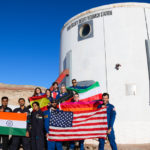
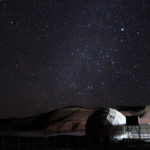

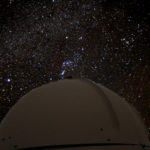
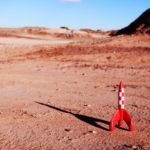
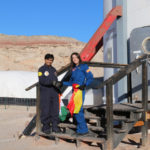
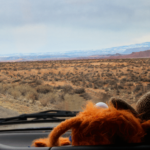
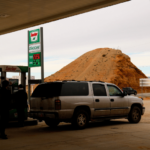
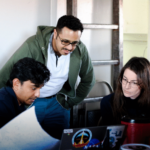
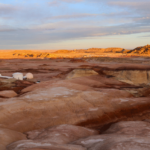
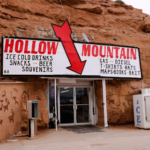
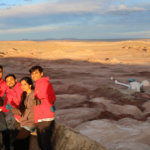

You must be logged in to post a comment.